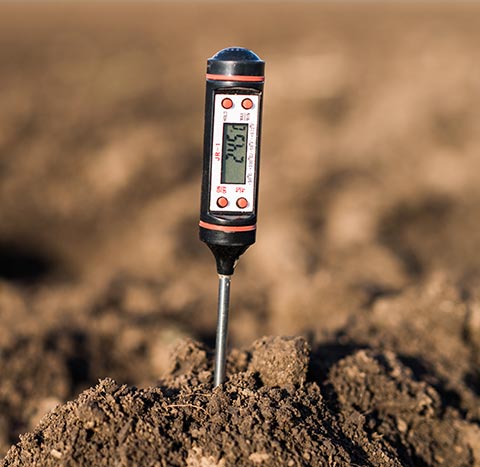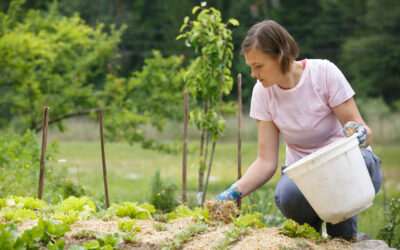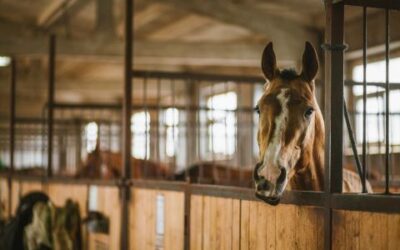Testing your soil this season after reading What’s Your Soil pH?
 Lucerne Farms asked Bruce Hoskins, a scientist at the University of Maine Soil Testing Lab, about the best approach to testing soil and what to keep in mind when making corrections. Thanks, Bruce, for helping us get on our way to a healthy garden!
Lucerne Farms asked Bruce Hoskins, a scientist at the University of Maine Soil Testing Lab, about the best approach to testing soil and what to keep in mind when making corrections. Thanks, Bruce, for helping us get on our way to a healthy garden!
The Importance of Testing
Bountiful vegetables, dependable blooms — it’s a gardener’s nirvana. But plants can’t thrive if they are challenged by nutrients. Soil pH is one of the primary factors controlling nutrient availability to plants, said Hoskins. Soil that is under the optimum pH range of 6 or 7 for nutrient availability of all major and micronutrients increases the chemical activity of aluminum, iron, and manganese in the soil. Depending on the plant, your garden may thrive with the availability of these essential micronutrients. For others, they can prove toxic. Learning your soil’s pH will help you determine the exposure of your plants, shrubs, flowers and vegetables and what you can do to make levels optimum.
Ready, Set, Test!
In general, a soil pH and/or fertility test should be done about every 3 years, said Hoskins, unless you suspect an immediate problem. “Soil is quite variable, so don’t just sample one spot,” he advised. He recommends collecting small samples from the surface down to normal tillage or rooting depth. Then, combine and mix these in a clean bucket, with any problem areas sampled separately.
If you are considering one of the many pH home testing kits available at garden centers, you can depend on reasonable accuracy. “Those that have a small capsule of powder to be mixed with water seem to be reliable, since you are mixing the color reagent fresh each time you use it,” Hoskins said. If your interest is in strictly pH levels, home testing can be the best choice. Sending soil to a public or commercial lab will usually entail a more complete analysis.
Amend After Testing
If your plants require a higher pH like many garden vegetables, for example, levels of aluminum, iron, and manganese can prove toxic to plants. Some plants do well with alkaline soil, or soil that has a pH above 6 or 7. You’ll find lilacs, forsythia, clematis do well with alkaline soil, as do some vegetables and trees. If you find your soil pH needs to be raised for what you are growing, or it is significantly under neutral, you’ll need to apply lime. “Lime not only raises soil pH but is the primary source of calcium (and magnesium),” said Hoskins.
Mulching & pH
When choosing a mulch, keep in mind that many inorganic mulches also can affect soil pH. Acidic mulches such as pine bark, pine needles, and peat moss may have a pH of 3.5 to 4.5. When you apply them continually, they may, over several years, cause the surface soil to become too acidic and affecting plant growth.
Organic mulches are composed of natural materials and will break down and provide nutrients that improve the soil. Choosing a high quality mulch grown from untreated fields such as the blend of hays from Lucerne Farms Premium Ground Cover/Mainley Mulch means your garden is getting a 100% natural and chemical free mulch that will enrich your soil without toxifying your plants.
Lime will gradually raise soil pH over several years when applied to the soil surface, so be in it for the long haul to achieve optimum levels. If you are using a testing lab, they will likely recommend what type of lime (with or without magnesium, since it will test magnesium levels in the soil). Hoskins said the rule of thumb is generally 6-8 lbs. of lime per 100 square feet to raise soil pH by 0.5 units. Lime ideally should be well tilled in to speed its reaction, he advised.
Acid-loving plants can easily tolerate higher levels of soil aluminum. In fact, they’ll most likely need a low pH in order to obtain enough iron and manganese — essential micronutrients.
While most shrubs and herbaceous perennials have an ideal pH range of 5.5 – 6.5, blueberries, azaleas, rhododendrons, and ericaceous plants require a lower pH at a range of 4.8 – 5.5. Vegetable gardens do best in the pH range of 6 to 7, or slightly acidic.
Lowering pH to achieve more acidic soil will require elemental, or yellow, sulfur. Hoskins’ general recommendations are 1 ½ lbs. of sulfur per 100 square feet to lower your soil pH by 0.5 units, again, mixed well to speed its reaction. “Other soil acidifiers containing varying amounts of elemental sulfur will work as well, but the application rate should be adjusted depending on the actual sulfur content listed on the label,” he cautioned.
Soil Testing in Maine
The Maine Agricultural and Forest Experiment Station (MAFES) Analytical Laboratory and Maine Soil Testing Service analyzes soil, plant tissue, compost, manure, irrigation water, wood ash, fertilizers, organic residuals and other materials for nutrient content, organic matter, lead and other trace elements for the public. You can find information about UMaine’s Soil Testing Lab, including how to take a soil sample, example soil testing reports, and how to understand recommendations, as well as frequently asked questions about taking a soil sample.




